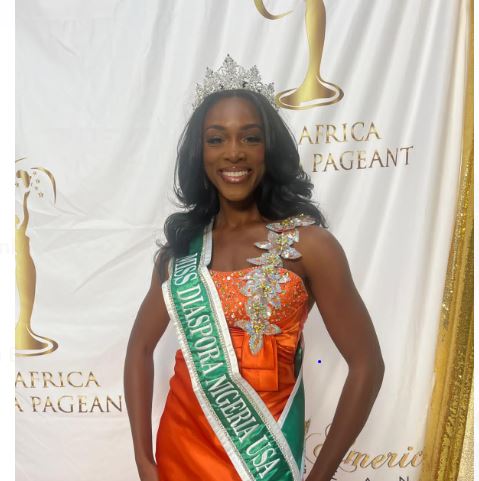In one 10-minute flash Sunday afternoon, the Yankees’ Aaron Judge and Giancarlo Stanton hit home runs, the Mets’ Starling Marte made a running catch to strand the bases loaded and the Rangers’ Igor Shesterkin briefly looked human in allowing a cheap goal.
And the Knicks, Nets and Islanders still had not started their games yet.
Sunday included two starting pitchers (the Mets’ Kodai Senga and Yankees’ Jhony Brito) making their MLB debuts, the Rangers scoring three goals in the first 21 minutes to win for the eighth time in 11 games, the Knicks securing one of the two remaining Eastern Conference playoff berths outside of the dreaded play-in tournament and the Nets coming that much closer to clinching the final one.
It was the perfect appetizer for what will be a jam-packed roller-coaster month of New York sports that may include two NBA playoffs series, two Stanley Cup playoffs series and the huge daily expectations placed on the two MLB teams.
It will be the first April of that kind here since 2013 — and that’s before all of the movement expected around the NFL Draft by the rapidly improving Giants and Jets.
In all, the six New York teams playing Sunday went 5-1.
• The Rangers crossed the 100-point threshold with a 5-2 rout of the Capitals.
• The Yankees launched three home runs in a 6-0 rubber-game win over the Giants.
• The Mets backed Senga to a 5-1 victory over the Marlins.
• The Nets kept a grip on the No. 6 seed, hanging on to beat the Jazz, 111-110.
• The Knicks clinched a postseason spot by topping the Wizards, 118-109.
• The Islanders spoiled the day’s perfecto by falling to the Hurricanes, 2-1.
Now, here are 10 athletes who will decide the mood of the city this month:

Julius Randle, Knicks: The All-Star forward is out for the rest of the regular season due to a sprained left ankle. A season of redemption — after he nearly punched his ticket out of town by taking on the fans during last season’s tough times — is only going to be complete if he is healthy enough to make up for a disappointing five playoff games (29.8 percent shooting and 4.6 turnovers per game) against the Hawks in 2021.
He had averaged a team-best 25.1 points per game while eschewing load management.
Jalen Brunson, Knicks: Arguably the greatest free-agent signing in Knicks history, Brunson should know better than most newcomers how to handle the New York playoff pressure. He won two NCAA championships at Villanova. His father had a bit part in three Knicks playoff runs in the late 1990s.
In his first game without Randle, on Friday night, Brunson scored a career-high 48 points and outdueled his almost backcourt-mate Donovan Mitchell of the Cavaliers in a likely first-round series preview.
Mikal Bridges, Nets: Is he New York’s next superstar? It sure seems that way as Bridges is the only player in the NBA averaging at least 25 points per game while shooting 50 percent from the floor, 40 percent from 3-point range and 90 percent from the line since the Feb. 9 trade deadline, when he was acquired from the Suns in the Kevin Durant deal.
He has 11 performances of 30-plus points in 23 games with the Nets after doing so twice in 365 career games with the Suns.

Ilya Sorokin, Islanders: Maybe the Vezina Trophy should get used to New York, as Sorokin might follow Shesterkin’s win last season. The NHL playoffs essentially become a Hottest Goalie Competition, and Sorokin was brilliant with an 8-1 record and 2.29 goals against average in March.
He has a knack for making the nearly impossible save with the game on the line that can’t be qualified by a .923 save percentage (third-best in the league).
Vladimir Tarasenko, Rangers: You might expect Patrick Kane on this list, but Tarasenko has been the more impressive in-season addition. The Rangers scored one goal in each of the final three games of the Eastern Conference finals last season. Needing more offense to get past the hard-to-kill Lightning, the Rangers traded for Tarasenko (41 career postseason goals), who led the Blues to their first Stanley Cup in 2019.
Can he help end the Rangers’ title drought that dates to 1994? He has seven goals in 26 games since the deal.
Kodai Senga, Mets: Justin Verlander landing on the injured list before making his Mets debut upped the stakes for the other big newcomer to the rotation. Senga, who signed a five-year, $75 million contract to be the No. 3 starter, looked like an ace by striking out eight in 5 1/3 innings of his debut.
After allowing the first four batters he faced to reach base, Senga thanked Marte for his catch and let his signature “ghost” forkball dance down in the zone.

Josh Donaldson, Yankees: Judge picked up where he left off with two home runs in three games against the Giants. Rookie Anthony Volpe is going to get a long runway. Whether the Yankees have a long lineup or not rides on Donaldson (2-for-11 with a home run in the opening series) protecting Stanton in the No. 5 hole better than he did last year (.222 batting average).
With Aaron Hicks banished to the bench, fans will be quick to make Donaldson the poster boy for any struggles.
Aaron Rodgers, soon-to-be Jet: The Jets’ over-under win total in 2023 is 9.5, according to Caesars, which obviously is planning for Rodgers’ arrival.
If the Packers want at least one pick in this year’s draft as part of the compensation — and why wouldn’t they give new quarterback Jordan Love the best chance to succeed? — they need to trade Rodgers to the Jets by April 27 (first round) or April 28 (second and third rounds). The Jets’ first on-field practice isn’t until May 22.

Saquon Barkley, Giants: Players who do not attend “voluntary” workouts during a contract dispute tend to get labeled as “selfish” or a “distraction.” Barkley’s five-year record shows he is neither, but his agent misread a plummeting free-agent market, the Giants pulled their $13 million per year long-term contract offer and now he is unhappily facing a one-year franchise tag.
Will Barkley protest by staying away from the facility on April 17? If he does, will fans remember how many of their favorite Giants stars gone by (Lawrence Taylor, Michael Strahan, Osi Umenyiora, for example) have missed more involved practices?
Filip Chytil, Rangers: The emergence of Chytil, Kaapo Kakko and Alexis Lafreniere on the Kid Line in last year’s playoffs carried over to their chemistry most of this season. All three have scored in the same game twice, but Chytil — with a fresh four-year contract extension in hand — leads the trio in goals (22) and points (44). He was third on the team in goals (seven) last playoffs.
Again, the Rangers can’t count on winning as many low-scoring games this time around with a slightly diminished Shesterkin and defenseman Ryan Lindgren’s injury uncertainty.
Today’s back page

Caitlin Clark the MWP (Most Watchable Player)
Move over Jean-Sebastien Giguere, Bobby Richardson, Jerry West and Chuck Howley. Make room for Iowa guard Caitlin Clark.
Yes, LSU won the national championship by trouncing Iowa, 102-85, in the women’s final Sunday afternoon.
And, yes, LSU’s Angel Reese was a deserving Final Four Most Outstanding Player after posting back-to-back double-doubles (24 points and 12 rebounds against Virginia Tech, followed by 15 points and 10 rebounds against Iowa).

But if the NCAA Tournament had one MVP (or MOP) for the full six-game length of the tournament? Clark would’ve joined a short list of honorees on losing teams because she was that good.
The Ducks’ Giguere (2003) is the most recent winner of the NHL’s Conn Smythe Award for playoffs MVP who played for a losing team. The Yankees’ Richardson (1960), Lakers’ West (1969) and Cowboys’ Howley (1970) are the only World Series, NBA Finals and Super Bowl MVPs, respectively, to come from losing teams.
Clark averaged 31.8 points and 10 assists per game in the NCAA Tournament. The second of her back-to-back 41-point explosions in the Elite Eight and Final Four was responsible for ending South Carolina’s 42-game winning streak and bid for an undefeated season and second straight national title.
Perhaps just as impressively, she did a better job than other recent women’s basketball greats, such as Candace Parker, Brittney Griner, Breanna Stewart and Sabrina Ionescu, of capturing the attention of the diehard sports fan who otherwise does not tune into women’s basketball.
Even I admit that, after covering the Rutgers women’s basketball beat for five seasons earlier in my career and following the sport closely enough to vote intelligently in the Associated Press Top 25, I have not watched much since then.

But the Iowa-South Carolina semifinal drew an average of 5.5 million viewers (with a peak of 6.6 million) and was the most-viewed semifinal on record across ESPN platforms, with a 72 percent increase over last year, according to the network.
So, let’s tip the cap to the organizers of the sport for wisely moving the final from Tuesday night (after the men’s final) to Sunday night and then to its new Sunday afternoon spot — and to Clark for providing us excellent college basketball games to watch on the already busy March and April calendar.
She will be back in school next season, and she will command my attention beginning in November, not March.
Heavy-handed Huskies
Connecticut is writing a great comeback story … without any real threat of losing its first five NCAA Tournament games.
Not so long ago, UConn was an out-of-place, sanctions-riddled, floundering program enduring three straight losing seasons (2016-17 through 2018-19) as a member of the American Athletic Conference.
Then Dan Hurley was hired as head coach, the Big East tossed its former member a life raft with a welcome-back invitation and now UConn is back as good as ever.

Maybe as good as any national champion ever, if the Huskies complete the job Monday night against San Diego State (9:20 p.m., CBS) to capture a fifth title in the past 25 years.
UConn’s average margin of victory through its first five March Madness games is 20.6 points, the third-highest since the tournament expanded to 64 teams in 1985, according to CBS Sports. Kentucky (21.5) in 1998 looked unbeatable until two single-digit wins in the Final Four, and Villanova’s dominance (20.7) in 2016 was bloated by a 44-point rout in the national semifinal.
But for game-in, game-out supremacy, consider that UConn handed:
• St. Mary’s its biggest loss (15-point margin) in 12 days.
• Miami its biggest loss (13) in 132 days.
• Arkansas its biggest loss (23) in 796 days.
• Iona its biggest loss (24) in 1,174 days.
• Gonzaga its biggest loss (28) in 4,844 days.

San Diego State’s biggest loss this season is by 17 points, its biggest loss over the past two seasons is by 18 and its biggest loss in head coach Brian Dutcher’s six seasons at the helm is by 30.
What a wild thing to be discussing entering a national championship game.
But don’t expect San Diego State, which can match UConn in terms of physical defense, to just roll over.
The Aztecs don’t have UConn’s offensive firepower, but they have won four of their five tournament games by seven points or fewer and have held 16 opponents this season to fewer than 60 points.
















Discussion about this post